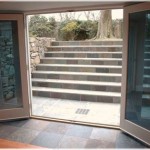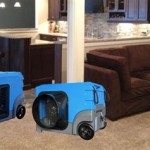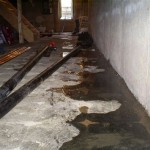Ejector Pumps For Basement Bathrooms: Essential Aspects to Consider
Ejector pumps are essential components of basement bathrooms to effectively handle wastewater from fixtures below the main sewer line. These pumps play a crucial role in ensuring a properly functioning bathroom without the risk of backups or overflows.
Types of Ejector Pumps
Ejector pumps come in two main types:
- Submersible ejector pumps are completely submerged in the wastewater basin, offering quiet operation and increased efficiency.
- Non-submersible ejector pumps are mounted outside the basin and are suitable for larger systems or where noise is a concern.
Components of an Ejector Pump System
An ejector pump system typically comprises the following components:
- Pump: The core component that moves wastewater.
- Basin: A sealed container that houses the pump and accumulates wastewater.
- Discharge pipe: Connects the pump to the main sewer line.
- Check valve: Prevents wastewater from flowing back into the basin.
- Float switch: Triggers the pump when the water level in the basin reaches a certain height.
Factors to Consider When Selecting an Ejector Pump
When selecting an ejector pump, it's essential to consider the following factors:
- Flow rate: Determines the pump's ability to handle wastewater volume.
- Head: Indicates the vertical height the pump can lift wastewater.
- Basin size: Determines the amount of wastewater the basin can hold before triggering the pump.
- Pump type: Submersible or non-submersible, depending on specific needs and preferences.
- Noise level: Submersible pumps tend to be quieter than non-submersible pumps.
- Reliability: Choose pumps with a proven track record of durability and performance.
Maintenance and Troubleshooting
Regular maintenance is crucial to ensure the longevity and efficiency of ejector pumps. Homeowners should periodically:
- Check the float switch for proper operation.
- Clean the pump and basin as needed.
- Inspect the discharge pipe for blockages.
In case of pump malfunctions, potential troubleshooting steps include:
- Resetting the float switch.
- Unclogging the discharge pipe.
- Inspecting the impeller for debris or damage.
When to Call a Professional
If troubleshooting efforts do not resolve pump issues, it's advisable to contact a qualified plumber. They can properly diagnose the problem and perform necessary repairs or replacements.
Conclusion
Ejector pumps play a vital role in the functioning of basement bathrooms, effectively handling wastewater from fixtures below the main sewer line. By considering the essential aspects outlined above, homeowners can make informed decisions when selecting and maintaining their ejector pump systems, ensuring a trouble-free bathroom experience.

Everbilt 1 2 Hp Upflush System Sewage Ejector Pump Kit Sw07501tc The Home

Basement Plumbing For Ejector Pump Up To Main Sewage Line

Sewer Ejector Pump Service

All About Basement Bathroom Systems Riverbend Home

Sewage Ejector Pump Boulder Installation Zoeller Pumps

Sewage Ejector Pump Maintenance Bieg Plumbing

Sewage Sump Pump Installation Plumbing Help

Superior Pump 1 2 Hp Sewage Ejector Kit With Basin 93020u The Home

Tips On Keeping Your Sewage Ejector Pump Running Smoothly

What Is A Septic Ejector Pump How Does It Work The Original Plumber
Related Posts







